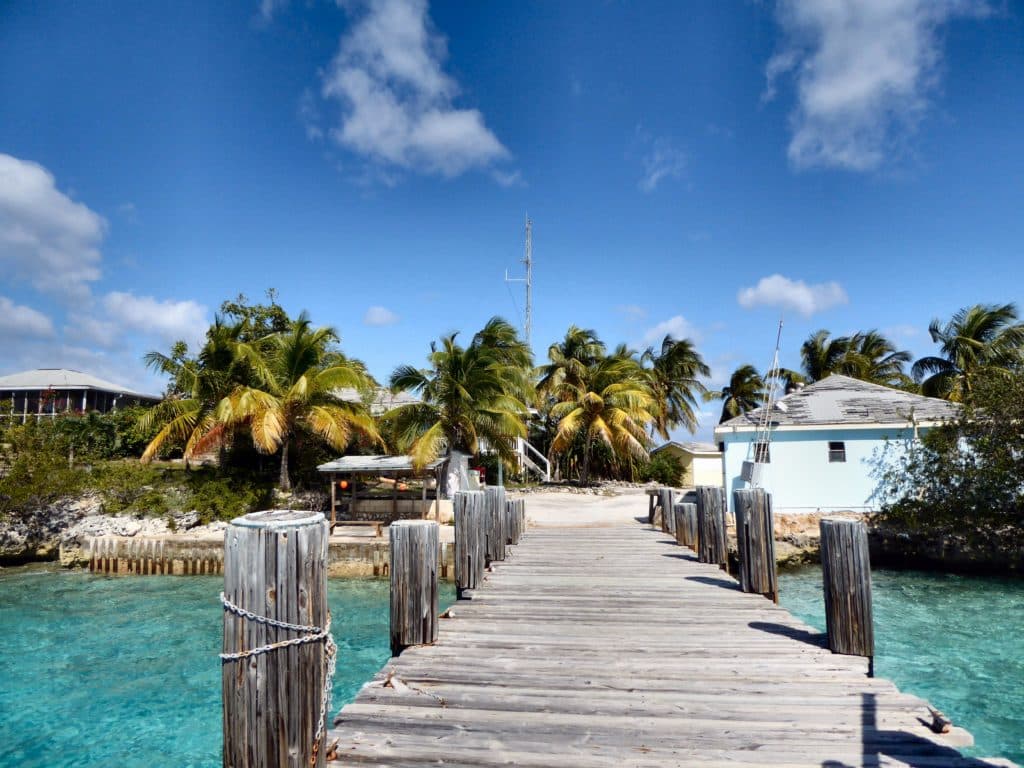
T here’s something eerie about a ghost town, even one that doesn’t seem to harbor any ghosts. Perhaps it’s the sensation that only a thin veil of time separates these empty streets and dilapidated buildings from the bustling, thriving community that once animated them. And when the residents had been uncommonly focused and purposeful, and then apparently vanished midstride — leaving everything behind and intact, like some post-apocalyptic movie set — then the lingering spirit is all the more palpable. So it is on Lee Stocking Island, in the Bahamas’ Exuma Cays, where the ruins of the once-famous Perry Institute for Marine Science now haunt an enchanting tropical isle.
I left the good ketch Silverheels anchored in 9 feet of invisible water over white sand, just a stone’s throw from a shattered pier, and dinghied ashore to explore the abandoned oceanographic research station and the lovely island that is slowly reclaiming the structures. An ambitious complex for such a remote place, the center must have employed dozens of people in its heyday. The infrastructure was — is — substantial yet comfortably casual, exuding an out-island charm. Wood docks, concrete ramps and fish pens, sandy roads, a dozen or so residences of various sizes and styles, a score of assorted research and maintenance buildings, and a large tarmac airstrip lie scattered across the north end of the island, separated by natural terrain but all connected by roads and paths. The main avenue out of town is lined with coconut trees laden with ripe drinking nuts. Wildflowers abound, and native birds, now the only visible inhabitants, make fleeting appearances.
The research station of the Perry Institute for Marine Science was founded by and named for John Perry, who purchased Lee Stocking Island in 1957. By 1970, he had established a thriving scientific center that included a tropical marine laboratory equipped to study the coral reefs, fisheries, ecosystems and underwater biodiversity of the region, as well as facilities to develop manned and unmanned submersibles. In 1984, the center became part of the National Oceanic and Atmospheric Administration’s National Undersea Research Program, conducting more than 600 submersible dives and tens of thousands of investigative scuba dives, making it one of the most active marine labs in the world. The submersible unit was sold to Lockheed Martin in 1989, but the institute continued its oceanographic studies and added programs for training and educating new generations of marine scientists and stewards.
Then, a few years ago, its grant ran out, the funding dried up, and everyone just left. Because of the difficulty and expense of packing and transporting all the machinery, equipment, appliances, furniture, tools and even many personal belongings, they were simply left behind, and the entire fully outfitted contemporary village was abandoned. Since then, many portable items of any practical use or value have been carted off by scavengers, yet more than enough remains to give the place an almost-still-lived-in feeling.
I spent a happy half-day exploring the settlement, hiking the roads and trails, peering into vacated structures, and imagining myself living in such an idyllic place, both when it was alive with people and purpose, and (especially) now in serene isolation.
Some say the scientists are only awaiting the next grant, and then they’ll return, renovate, and resume their studies here. Perhaps. But for now, Lee Stocking Island is home to a unique ghost town indeed, haunted only by the occasional visiting cruising sailor.
— Tor Pinney








